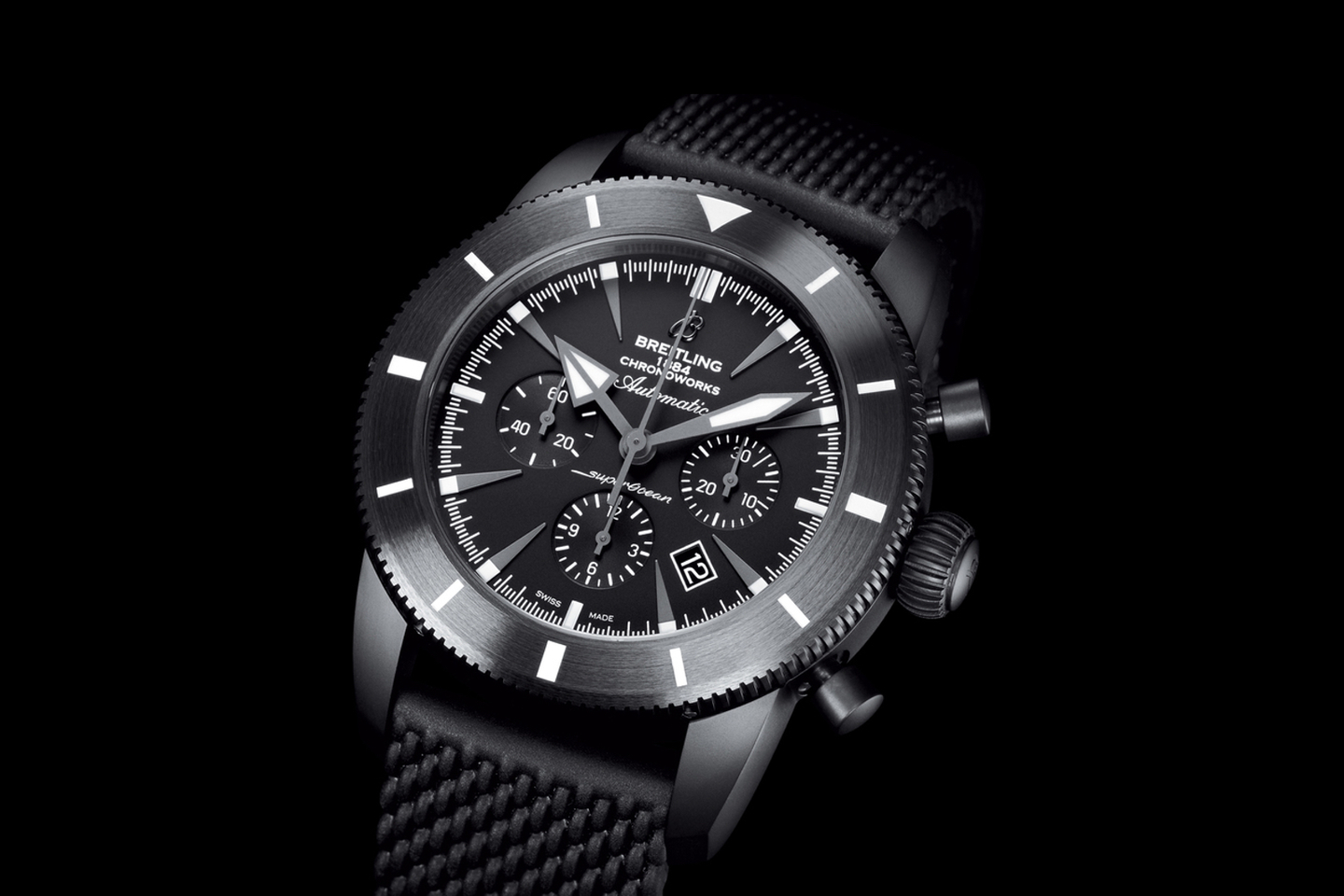Simply put, the team develops and tests new technologies that can be utilized to enhance series-production watches. Chronoworks Performance Labs refers to the advanced research and development department at Breitling’s headquarters in La Chaux-de-Fonds, Switzerland.
The Superocean Heritage Chronoworks is the first timepiece to utilize the chronometric enhancements developed by Chronoworks. These enhancements represent five key areas that start with the existing caliber B01 – Breitling’s first in-house mechanical movement – and result in a reworked caliber that outperforms the existing movement in many ways.
 Breitling caliber B01 Chronoworks
Breitling caliber B01 Chronoworks
Silicon wheels
A watch movement is at halt 95% of the time, and each time it restarts there is a loss of energy. To offset this, the movement’s center wheel, third wheel, and fourth wheel have been manufactured with silicon which reduces weight by about half – making the restarting, and subsequent energy loss much less pronounced. Additionally, thanks to deep-reactive iron etching (DRIE), the wheels are more rigid than those created with traditional materials and have less distortion of the spokes.
Ceramic baseplate and gear-train bridges
The baseplate and bridges were made of ceramic (hexagonal boron nitride), which is used in high-performance automative engine lubricants, but according to Breitling, applied in horology for the first time. Thanks to an extremely low friction coefficient, the arbors can pivot directly in the baseplate and bridge holes without any wear or energy loss – and also without any lubricant, thereby eliminating 11 out of 47 jewels.
Silicon escapement
The highest level of energy loss takes place in the escapement system, which distributes the movements power. Chronoworks watchmakers maintained the Swiss level escapement but used silicon fro the wheel and lever, like with the aforementioned silicon wheels, to reduce weight and therefore inertia, as well as eliminating the need for pallet jewels. The profile and the teeth and pallets were also optimized. The banking-free angular limitation of the lever also contributes to increasing reliability. The overall result is a 42% gain in efficiency for this vital organ, thereby ensuring optimal security, an essential aspect of performance.
Variable-inertia balance
The balance wheel upgraded to a more precise variable-inertia balance that is adjusted via four tiny gold weights mounted on the rim. The wheel combines a nickel felly (ring) with a cross (spoke) made of brass, to modify the inertia. When the temperature rises, the cross expands and “pushes” the felly towards the exterior, thus increasing inertia. When the temperature drops, the cross contracts and “pulls” the felly towards the center, thereby reducing inertia. According to the manufacture, “This system reinterprets the principle of bimetallic balance-wheels by leveraging state-of-the-art production technologies (LIGA).”
Elastic toothing
Finally, Chronoworks reworked the arbor and two wheels that make up the vertical coupling-clutch of the chronograph mechanism. By equipping the second pinion, that is in between the two wheels with an elastic toothing molding the shape of the opposite teeth, the result is no energy loss. As well as smoother activation of the chronograph mechanism, presumably. And less jerking of the chronograph seconds hand upon starting/stopping.
Final thoughts
Ultimately, luxury watch Breitling has taken their first in-house caliber, the B01, enhanced the energy efficiency and reduced friction – resulting in a more advanced version of the movement. It now has 100-hours of power reserve (up from 70), and is more precise as the longer power reserve allows for a more stable amplitude.
The high-tech movement is aptly fitted inside of a black ceramic case. The case measures 46 mm x 15.44 mm and weighs 95.55 grams without the strap. The Superocean Heritage Chronoworks is limited to 100 pieces and retails for approximately $40,000.
